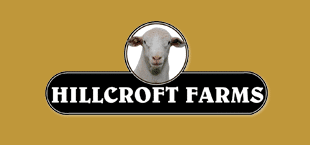How It All Started
Following a major health event in 2002, Dawson Snr decided if he was to keep involved in the sheep side of the business some of the “heavy lifting” involved in traditional sheep production had to be removed.
As wool production and related activities made up at least 25% of the work load with shearing, crutching, dagging, fly strike, lice control and mustering etc, it became obvious that this was one chore of sheep production that could be eliminated. This was particularly so, as meat production had always been Dawson’s preference in sheep farming.
Being the owner of one of the highest performing Poll Dorset flocks in Australia, for meat production traits, it was quite obvious to Dawson Snr that it was only necessary to breed the wool off them and his ambition would be well on its way to being achieved.
So started the process in 2005 with the mating of a selection of Poll Dorset ewes from the stud flock to top White Dorper rams in order to breed a wool shedding composite sheep that was easy-care, hardy and a good do-er.
It seemed an ideal opportunity to develop a breed that not only suited the pastoral area, as the Dorper does so well, but also performs at better levels in the medium to higher rainfall areas where the Poll Dorset is at its best. It needed to be a very adaptable sheep that could perform well across a wide and diverse range of climate and conditions. It had to be hardy and yet able to perform at the highest level for growth when conditions were right for peak production.
The high milking ability of the Dorset and the strong maternal instinct of both breeds needed to be preserved. Good fecundity along with the ability to breed year round was a non-negotiable trait for the new breed.
Sufficient fat in the ewes for good maternal function and survival in harsher conditions was most necessary.
Good muscling, lean meat yield and eating quality were also traits that were to be a prerequisite of the new breed, to meet the needs of not only the producer and processor but also the needs of markets and consumers around the world.
Dawson Snr was and is well equipped in the areas of producer, processor and consumer needs. Not only has Dawson Snr had fifty odd years as a breeder of prime lambs with strong use of performance recording in breeding, but also as chairman of WAMMCO for 15 years. WAMMCO has developed into Australia’s largest and most successful sheep and lamb processing and marketing Co-operative. Dawson’s knowledge of the requirements in these areas is well known.
Wool proved to be more difficult to remove from the Dorset than expected, but progress was made and by 2010 the first “easy-care” rams were offered and sold at the Hillcroft Farms Annual Production sale.
It was also in this year that Hillcroft Farms experienced one of the driest years in the area for nearly 50 years. At the time, the developing easy-care flock consisted of 50/50 Dorset and Dorper genetics and because of the difficulty in breeding the wool off the Dorset a large number of 25% Dorset and 75% Dorper sheep had also been bred. The latter group of ewes, 25/75, at pregnancy scanning that year proved to be in far superior condition, by almost one condition score, when compared to the 50/50 group of ewes.
This was a significantly defining moment for the flock as it was quite obvious that the hardiness of the Dorper had been captured in the 25/75 cross ewe more so than in the 50/50 cross. The 25/75 cross flock would now form the basic make-up of the new breed.
The new breed stabilized very quickly, which is not surprising considering that fundamentally only two breeds were involved, the Dorset and the Dorper. Only a bit more Dorset was added to the Dorper, the Dorper already being cross of 50/50 Dorset and Persian Fat Tail, to give a very suitable breed of sheep. The new breed suiting a wide area of Australia from the wetter areas of Southern Australia to the drier areas of more northern and inland parts.
Structural issues along with performance criteria have been addressed and will continue to be so to maintain a good performing, structurally sound breed that has the hardiness and do-ability of the Dorper.
Known as the Easy-Care breed, demand for rams quickly grew; starting from 20 rams the first year. Numbers doubled each year and it quickly became apparent that the new breed needed a less generic name than Easy-Care to give it its own unique identity.
In 2014 the new breed was named “UltraWhite” the easy-care sheep, one that meets the criteria set out by Dawson Snr in 2005 to meet his needs and the industry’s as well.
